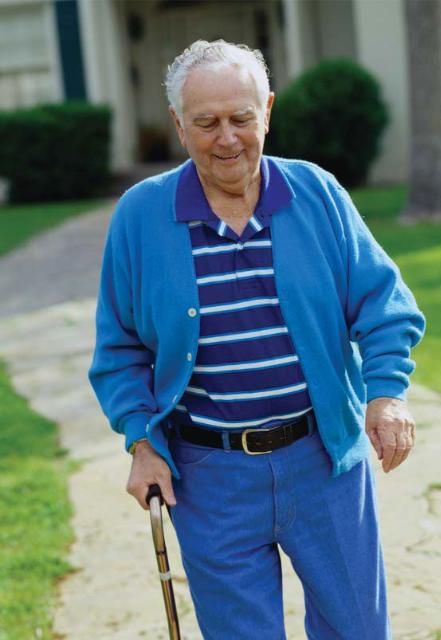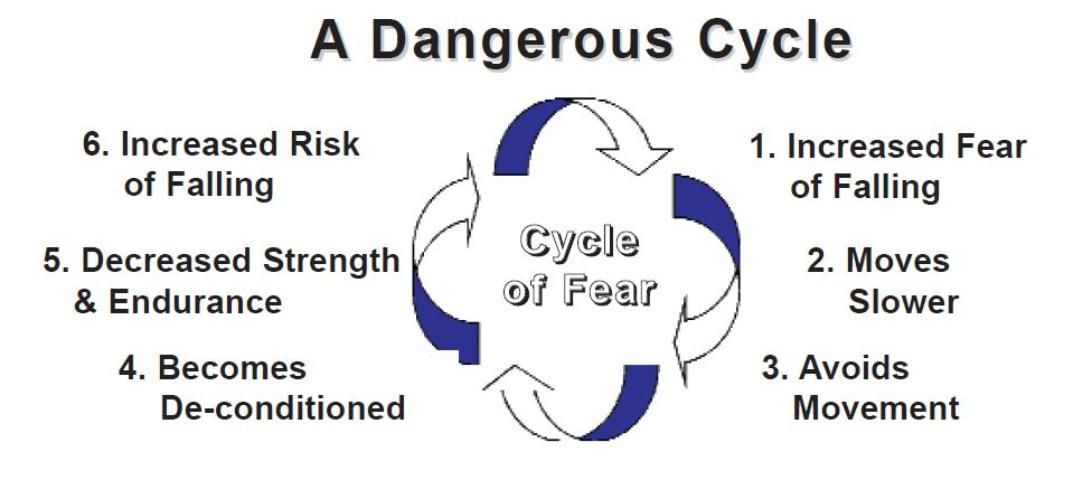Aging in the 21st Century
According to the US Census Bureau, by the year 2050 the nation's elderly population will more than double to 88 million, and the more frail, over-85 population will quadruple to 19 million.
Currently, Florida ranks first in the United States in the percent of the population who are full-time and seasonal residents over the age of 65. Older Floridians, their families, and communities face many issues related to aging. Aging in the 21st Century is an eight-topic program that addresses issues such as:
-
Health and medical care
-
Family relationships
-
Economic concerns
-
Caregiving
-
Home modifications
-
Retirement
-
Nutrition and diet

What You Will Learn
-
Fall Prevention: Why it is important
-
Risk Factors: Understanding the different risks that increase the chances of older adults falling
-
Intervention and Prevention: What steps you can take to reduce the risks of falling
Why Fall Prevention Is Important
Fall prevention is essential for a variety of reasons:
-
Among older adults (those 65 or older), falls are the leading cause of injury and death.
-
One-third of seniors 65 years and older fall each year.
-
In 2009, 2.2 million nonfatal fall injuries among older adults were treated in emergency departments, and more than 581,000 of these patients were hospitalized.
-
One-third of nursing home admissions are because of falls. In fact, more than 90% of hip fractures are caused by falls.
Falls are not only dangerous for older adults, but they are also costly. In 2000 the cost of medical care related to falls was more than $19 billion (or more than $28 billion in 2010 dollars). With the population aging, both the number of falls and the costs to treat fall injuries are likely to increase. By 2020, the annual direct and indirect costs of fall injuries are expected to reach more than $65 billion. When someone falls, there are other costs as well. People who fall may face long-term disability, lower productivity, and loss of independence.
Risk Factors of Falling and Ways to Reduce Risks
Older adults tend to fall more often than other people for several reasons:
-
Physical changes, including behavioral and mental changes associated with aging
-
Lifestyle and daily behaviors
-
Environmental factors
Physical Changes
Physical changes associated with aging are known to increase the risk of falling. These risks are mostly related to changes and medical conditions that become more frequent and numerous over time. Having one or more of the following conditions increases the risk of falling:
-
Diabetes
-
Arthritis
-
Osteoporosis
-
Stroke
-
Incontinence
-
Musculoskeletal stiffness
-
Weak muscles
-
Problems with sensory perception (i.e., hearing, vision, or feeling)
-
Balance and gait impairment
-
Cognitive/mental problems (i.e., memory disorder, inattention, dementia, or depression)
Ways to Reduce These Risks
-
Assess and manage chronic conditions such as problems with vision and hearing.
-
Follow a healthy diet.
-
Have an osteoporosis screening.
-
Reduce medication intake if possible.
-
Visit a physical therapist for balance and gait training if necessary.
-
Learn to stand and pause before you step.
Lifestyle and Daily Behaviors
Regular day-to-day activities may also be risk factors when considering falls. The following list contains lifestyle and daily behaviors that you should consider to reduce the risk of falling:
-
Lack of exercise: Take part in some kind of physical activity to keep muscles and bones strong.
-
Improper footwear: Wear shoes that give you support. Women should avoid wearing heels.
-
Alcohol use: Alcohol impairs your sense of balance and increases the risk of falling.
-
Poor nutrition and hydration: Eat a balanced diet and drink plenty of water.
-
Fear of falling: The diagram below (Figure 2) shows how a fear of falling can actually increase the risk of falls.

Environmental Risks
Environmental risks are common in your home and neighborhood. These risks include:
-
Clutter: Keep clutter in the home to a minimum.
-
Poor lighting: Replace the lighting in your home with brighter lights. Place a night-light in the bathroom and dark hallways.
-
Lack of supports: Install handrails in the bathroom and at the steps into your home.
-
Out-of-reach items: Keep objects in your home at a level you can easily and safely reach.
-
Obstacles in walkway: Be alert to objects in your path that may cause you to trip.
-
Small pets: Be aware of pets that get underfoot and may cause you to fall.
-
Improper or missing handrails/ramps: Contact the proper community officials and request repair.
-
Cracks in sidewalks in front of buildings and homes: Be alert and use caution; also inform someone so that they can repair them in compliance with the safe public access laws.
-
Quick changing traffic lights: Look for a safer way to get around or ask someone for assistance when crossing the street.
Did you know?
Falls can happen anywhere, but more than half of all falls happen at home. Many of these falls could be prevented by making simple changes in the home.
For more information on Aging in the 21st Century please refer to the following publications and/or contact your local Extension office.
Publications in This Series
-
Designing Educational Programs for Older Adults (https://edis.ifas.ufl.edu/fy631), Martie Gillen, PhD, Carolyn Wilken, PhD, MPH, and Jenny Jump, M.S.
-
Safe Return (https://edis.ifas.ufl.edu/fy626), Martie Gillen, PhD, and Meredeth Rowe, RN, PhD
-
Financial Issues (https://edis.ifas.ufl.edu/fy627), Martie Gillen, PhD, and Jo Turner, PhD, CFP
-
Elder Nutrition (https://edis.ifas.ufl.edu/fy628), Linda Bobroff, PhD, RD, LD/N
-
Fall Prevention (https://edis.ifas.ufl.edu/fy629), Martie Gillen, PhD, Kristen Smith, MPH, and Jenny Jump, M.S.
-
Family Relationships in an Aging Society (https://edis.ifas.ufl.edu/fy625), Martie Gillen, PhD, Terry Mills, PhD, and Jenny Jump, M.S.
-
Adapting the Home (https://edis.ifas.ufl.edu/fy630), Martie Gillen, PhD, Pat Dasler, MA, OTR/L, and Jenny Jump, M.S.
-
The Future of Aging Is Florida (https://edis.ifas.ufl.edu/fy624), Martie Gillen, PhD, and Jeffrey Dwyer, PhD
Aging in the 21st Century is co-sponsored by the University of Florida Institute of Food and Agricultural Sciences Department of Family, Youth and Community Sciences, and the College of Medicine's Institute on Aging. It was originally published in 2003 and was supported by a grant from the Associate Provost for Distance, Continuing and Executive Education, Dr. William Riffee.
Reference
Centers for Disease Control and Prevention. "Costs of Falls Among Older Adults." Accessed November 2012. http://www.cdc.gov/HomeandRecreationalSafety/Falls/fallcost.html